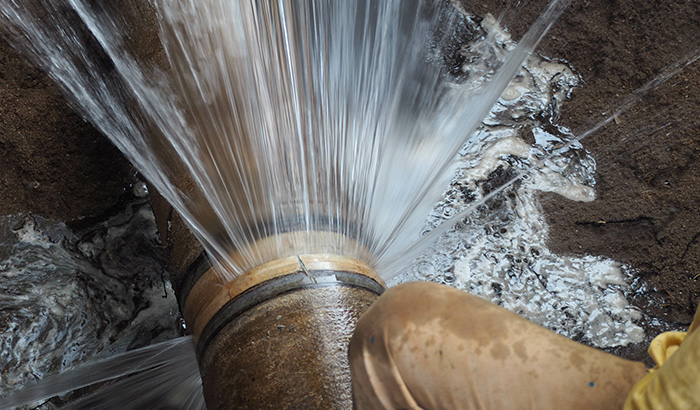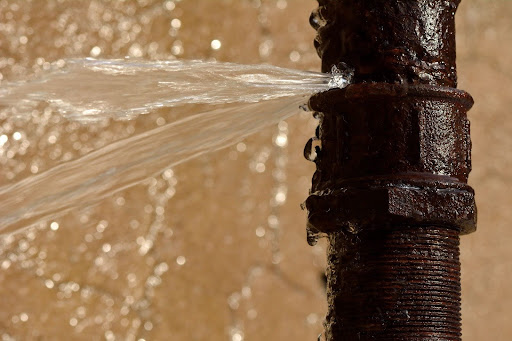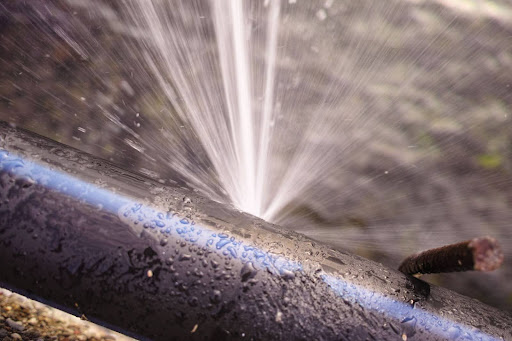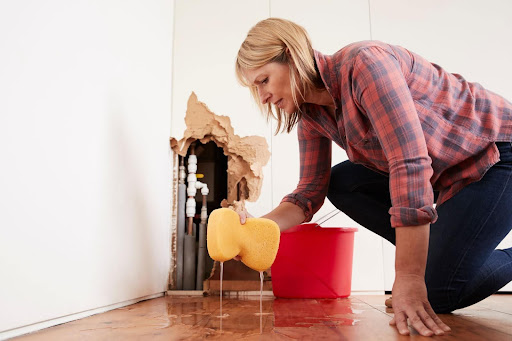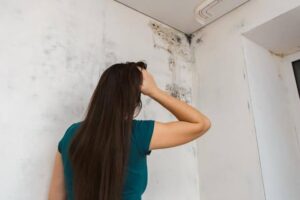As winter draws near, it’s important to be mindful of the potential risks associated with burst pipes and water damage in your home. Cold weather takes a toll on your plumbing system, leading to disruptive and costly issues.
In this blog, we’ll dive into the various aspects of this winter threat, from understanding what causes pipes to burst to practical tips on prevention, early detection, and effective damage control. By the time you finish reading, you’ll have the knowledge and tools to shield your home from these winter perils, ensuring a warm, dry, and stress-free season ahead.
So, let’s get started by exploring why burst pipes and water damage are such pressing concerns during winter and how addressing them promptly will spare you from significant headaches in the future.
Understanding the causes
To effectively prevent burst pipes and water damage during the winter, it’s crucial to grasp why pipes are prone to rupturing in cold weather. Here’s a breakdown of the key factors at play:
Why pipes burst in cold weather
When the temperature drops, water inside your plumbing system freezes. Unlike many other substances, water expands when it freezes, which creates immense pressure inside the pipes. If this pressure becomes too great for the pipe to contain, it will rupture, leading to a water leak once the ice thaws.
Common factors contributing to burst pipes
Several elements increase the risk of pipes bursting in cold weather:
- Lack of insulation: Insufficient or damaged insulation in your home’s walls and ceilings exposes pipes to extreme cold, making them more susceptible to freezing.
- Sudden temperature drops: Rapid and drastic temperature fluctuations cause pipes to expand and contract, which weakens them over time.
- Neglected plumbing maintenance: Failing to properly maintain your plumbing system, including fixing leaks and insulating exposed pipes, leaves your home vulnerable to burst pipes.
- Poor installation: Inadequate pipe installation or placement leads to uneven exposure to cold temperatures, increasing the likelihood of freezing and bursting.
Identifying vulnerable areas in your plumbing system
Identifying vulnerable areas within your plumbing system is essential since not all pipes face the same risk of freezing and bursting. These susceptible spots often encompass exterior pipes found in unheated locations such as crawl spaces, garages, or attics, which are particularly prone to freezing.
Pipes situated near exterior walls, running alongside them, or in proximity to these walls are also exposed to colder temperatures, increasing their vulnerability to freezing. Additionally, pipes lacking adequate insulation or with insulation in poor condition are at a higher risk of freezing and subsequently bursting.
By understanding these causes and identifying vulnerable areas within your plumbing system, you’ll be better equipped to take proactive measures to prevent burst pipes and the water damage they cause during the winter months.
Preventing burst pipes
As the saying goes, “An ounce of prevention is worth a pound of cure.” This certainly holds true when it comes to preventing burst pipes during the winter. Here are essential tips and steps to safeguard your plumbing system:
- Insulate exposed pipes: Apply pipe insulation sleeves or wrap pipes with heat tape to keep them warm and shield them from freezing temperatures.
- Seal gaps and cracks: Inspect your home for any gaps or cracks that allow cold air to penetrate. Use caulk or weatherstripping to seal these openings, particularly around pipes near exterior walls.
- Disconnect garden hoses: Before winter arrives, disconnect and drain garden hoses. Install outdoor faucet covers to prevent freezing and damage to hose bibs.
- Close exterior vents: If you have crawl spaces or an attic, close any exterior vents during winter to keep cold air out and maintain warmer temperatures around your pipes.
- Let faucets drip: Allow faucets connected to vulnerable pipes to drip slowly on exceptionally cold nights. This constant flow of water prevents freezing.
Steps to take before cold weather sets in
Consider taking a few important steps to prepare your plumbing system for the winter season. First, it’s advisable to schedule a professional inspection with a plumber who can thoroughly assess your plumbing system, identify potential issues, and offer valuable recommendations for winterization.
Additionally, make sure you are familiar with the location of your main water shutoff valve; this knowledge will enable you to quickly turn off the water supply in the event of a pipe burst, minimizing potential damage. Maintaining a consistent indoor temperature, particularly when you’re away, is crucial. Set your thermostat to a minimum of 55°F (12°C) to prevent pipes from freezing.
Lastly, in areas prone to cold temperatures, like the kitchen and bathroom, consider opening cabinet doors to facilitate the circulation of warm air around pipes located under sinks. These preventive measures help safeguard your plumbing system during the winter months.
Signs of burst pipes
Recognizing the signs of burst pipes is essential to addressing the issue promptly. There are visible and audible clues to watch out for, including water stains on walls and ceilings, which manifest as discolored patches or swollen areas, signaling water seepage. Puddles or standing water indoors are clear indicators of a water leak, potentially originating from a burst pipe.
Pay attention to unusual sounds like dripping or hissing, especially from concealed locations such as behind walls or beneath floors. Be sure to keep an eye on your water meter readings — a sudden spike, even when water is not in use, could indicate the presence of a hidden burst pipe.
Being vigilant about these signs helps you detect and address the signs of burst pipes in a timely manner, minimizing potential damage.
Detecting water damage
Burst pipes often result in water damage, which may manifest in various ways throughout your home. Excessive moisture from a burst pipe creates ideal conditions for mold and mildew growth, especially in damp and dimly lit areas. Keep an eye out for paint issues such as peeling or bubbling on walls and ceilings, as these are common consequences of water infiltration.
Additionally, wooden floors may become warped or discolored when exposed to water for extended periods, signaling potential damage. Be attentive to any strange or musty odors that may emerge in areas affected by mold or stagnant water, as these also indicate water damage.
Immediate response and damage control
Discovering a burst pipe may be alarming, but it’s essential to act swiftly and decisively to mitigate the damage. Here’s a step-by-step guide on what to do when you encounter a burst pipe.
It’s crucial to act immediately when you suspect or come across a burst pipe. Signs may include water pooling, dripping, or unusual sounds. Here’s what you should do:
- Prioritize Safety: Safety should be your first concern. If the burst pipe is located near electrical outlets or appliances, turn off the electricity in the affected area to avoid potential hazards.
- Shut Off the Water: Locate the main water shut-off valve for your home. This valve is usually near the water meter or where the main water line enters your house. To close the valve, turn it clockwise (right). Shutting off the water supply is essential to stop the flow of water into your home and prevent further damage.
- Release Pressure: After closing the main valve, open faucets in your home. This will release any remaining water in the pipes, reducing pressure and preventing additional leakage.
While you wait for professional assistance, there are some temporary measures to take to minimize water damage:
- Contain Water: Place buckets, towels, or absorbent materials strategically to contain and collect water in the affected area.
- Locate the Burst Pipe: If you can access the burst pipe, use pipe repair tape or a pipe clamp to temporarily seal the leak. This reduces the flow of water until professionals arrive.
- Contact Professionals: Reach out to a qualified plumbing professional or a water damage restoration service as soon as possible. They will assess the extent of the damage, repair the burst pipe, and address any water damage to your property.
- Document the Damage: Take photographs or videos of the damage for insurance purposes. Keep records of any expenses related to repairs and cleanup.
Responding promptly to a burst pipe is crucial in preventing extensive damage to your home. Remember to prioritize safety, take immediate action to shut off the water supply, and seek professional assistance. By following these steps, you minimize the impact of a burst pipe on your property.
Calling in professionals
When dealing with burst pipes and water damage, professional assessment and repair are essential for several reasons. Experts possess the experience and tools needed for accurate diagnosis, ensuring effective and lasting repairs. They also handle safety hazards and provide holistic solutions to prevent future incidents.
When you engage a professional, expect a thorough assessment, immediate and precise repairs, water extraction, drying, and comprehensive restoration. Seeking professional assistance yields long-term benefits, including preventive measures, streamlined insurance claims, improved health and safety, and maintained or enhanced property value.
Involving professionals secures the long-term prosperity of your property and your peace of mind.
For a comprehensive assessment, swift repairs, and lasting solutions, contact the experts at Total Flood & Fire Restoration.
With our experience and dedication, we’ll ensure your home is restored and fortified against future issues. Don’t hesitate to call Total Flood & Fire Restoration 24/7 at 385-483-2109 for peace of mind and a home that’s safe and sound.

